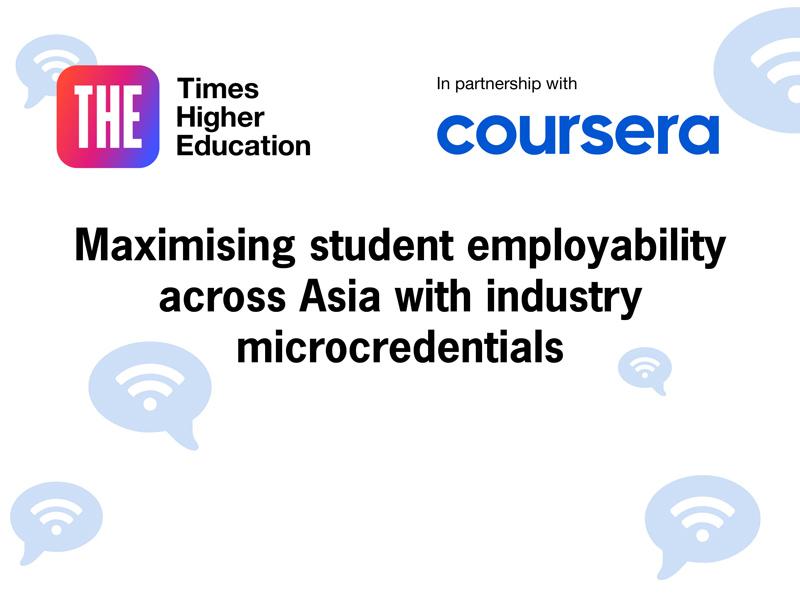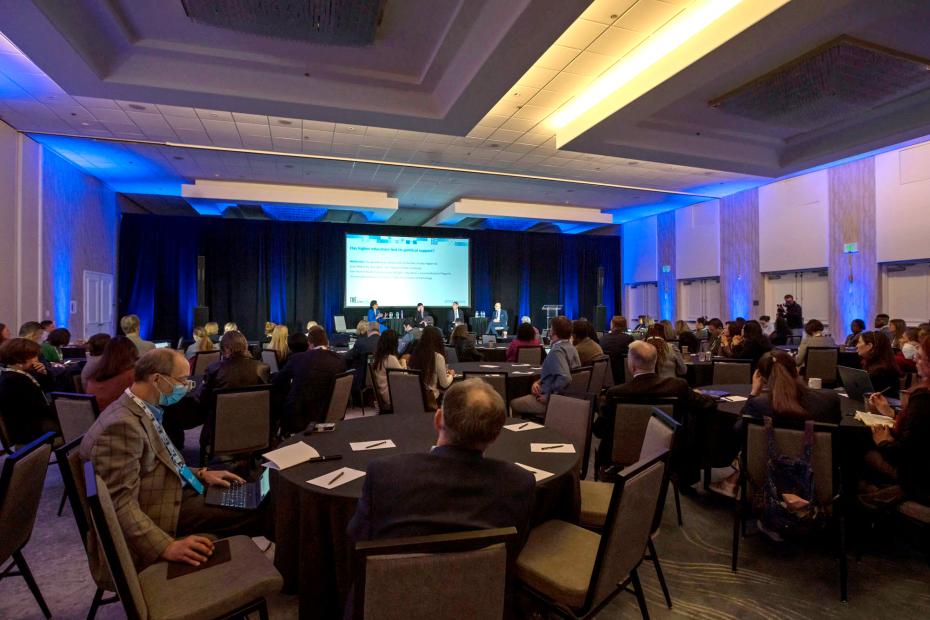In a webinar held by Times Higher Education in partnership with Coursera, an expert panel centred its discussion on microcredentials, how they can be integrated into university curricula and what needs to improve to fill the skills gap in Asia.
The integration of microcredentials into curricula is essential to assist graduates in meeting industry demands. “Especially in the case of microcredentials, which are highly related to industry, the university can collaborate with businesses to come up with some great courses where input from industry is used to help design the curriculum,” said Ewe Hong Tat, president of the Universiti Tunku Abdul Rahman.
Cheryl R. Peralta, vice-rector for academic affairs at the University of Santo Tomas, added that alumni feedback reflected the success of the integration of microcredentials into curricula. “We have received comments from alumni who say that new graduates already possess the skills expected and recognised by companies, so they don't have to take microcredentials after graduation,” she said.
Aigerim Raimzhanova, director for international development, careers and partnerships at Narxoz University, explained how her institution combines traditional study with industry experience. “We have dual programmes at Narxoz. This means that students spend four years of their studies working towards their degree, but eight months out of those four years are spent in industry. We do this for hospitality students, and it’s more than an internship. They are working at a hotel, but they continue taking [university] courses.”
Bibin Shivas, director of customer success at Coursera, enthused about Coursera’s Career Academy, which offers students industry certifications that develop skills and prepare graduates to get good digital jobs. “Let’s say someone starts their career as a data analyst. Now, a few years down the line, they want to move into a data scientist role, which is an upwards career progression. Universities can offer alumni certificate programmes where microcredentials are offered online, but also with some live sessions from the university, which makes it very powerful. Alumni are able to get the benefit of content that is already there, but also have that relationship with the university,” Shivas said.
The panel concluded that efforts are still needed to fill the skills gap to meet future industry needs. “I think microcredentials might be more useful for graduates who have not studied certain content because, at the time that they were studying, these technologies or practices were not yet available and therefore there’s a need to bridge that knowledge or skills gap,” said Peralta.
The panel:
- Yevgeniya Daineko, vice-rector for science and international affairs, International Information Technology University
- Gitanjali Goswami, branded content manager, Times Higher Education (chair)
- Nurgul Nalgozhinal, director of international affairs, International Information Technology University
- Cheryl R. Peralta, vice-rector for academic affairs, University of Santo Tomas
- Aigerim Raimzhanova, director for international development, careers and partnerships, Narxoz University
- Bibin Shivas, director of customer success, Coursera
- Ewe Hong Tat, president, Universiti Tunku Abdul Rahman
Watch the webinar on demand above or on the THE Connect YouTube channel.


comment